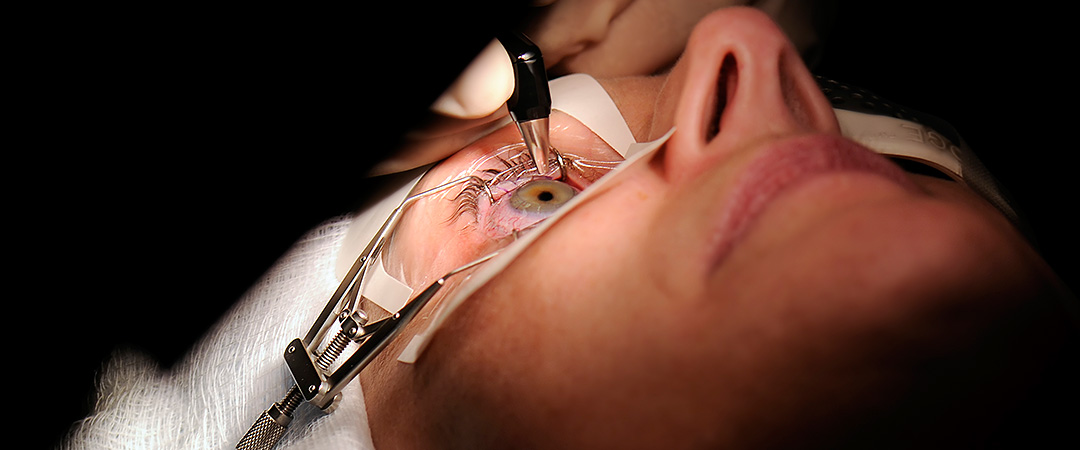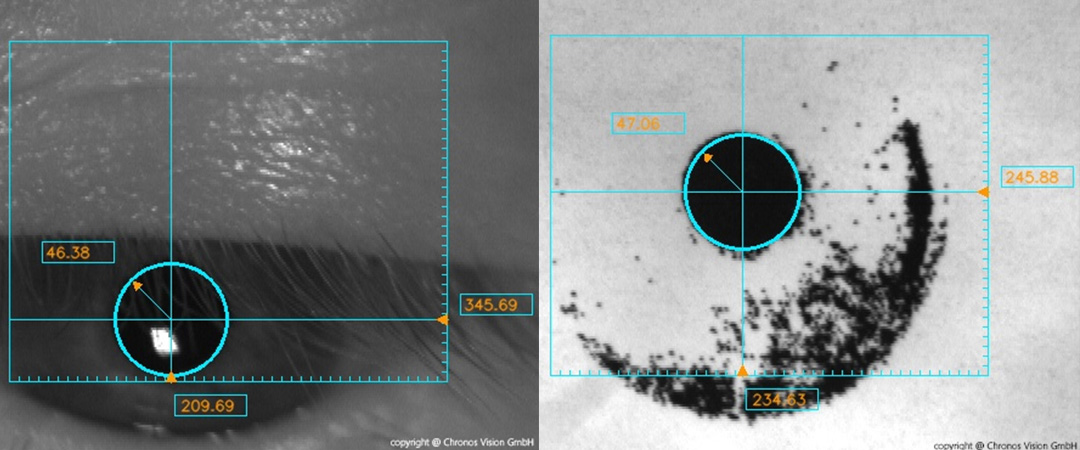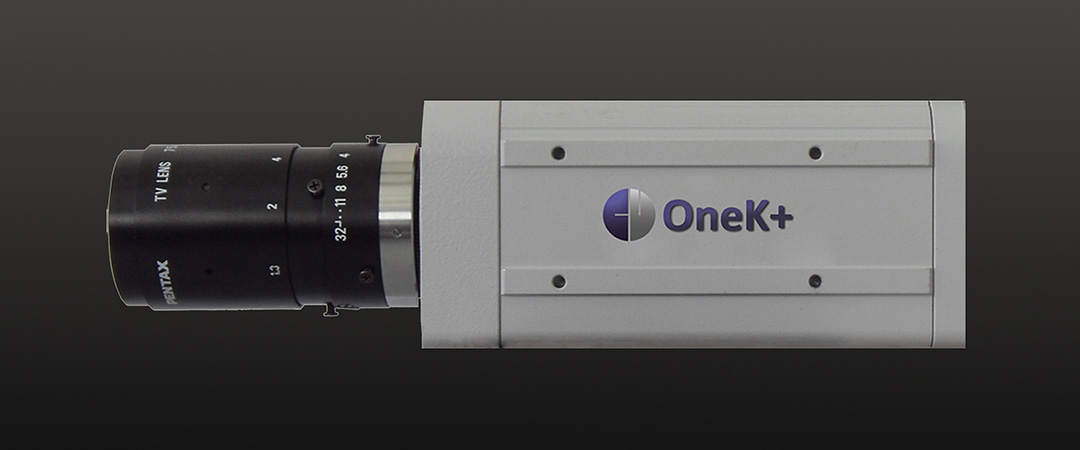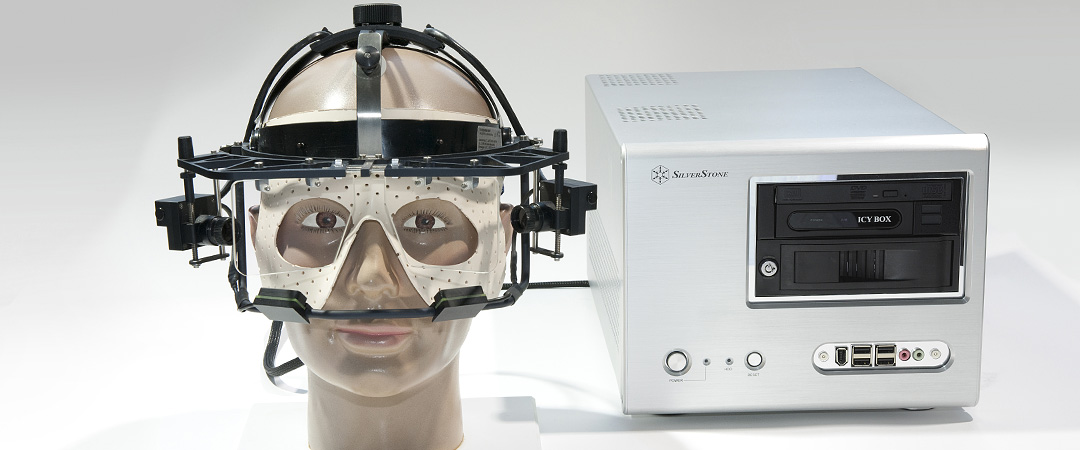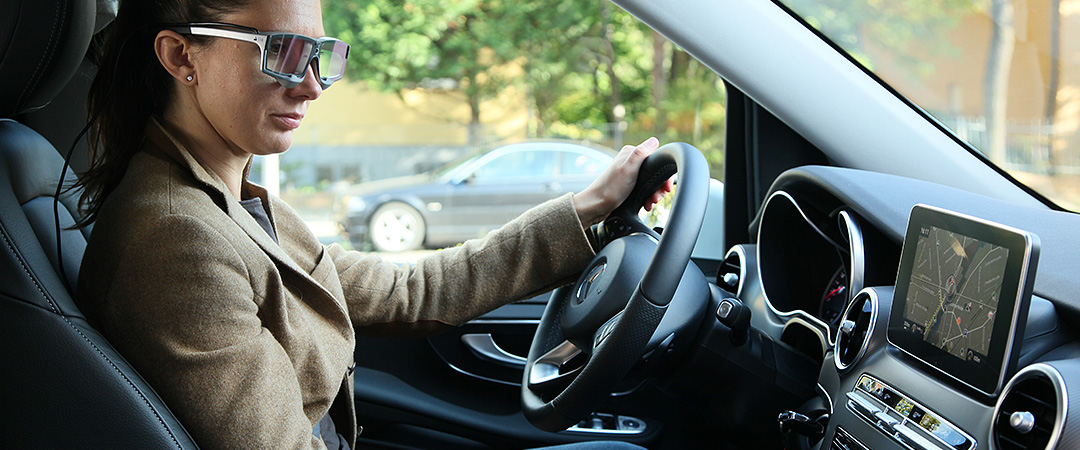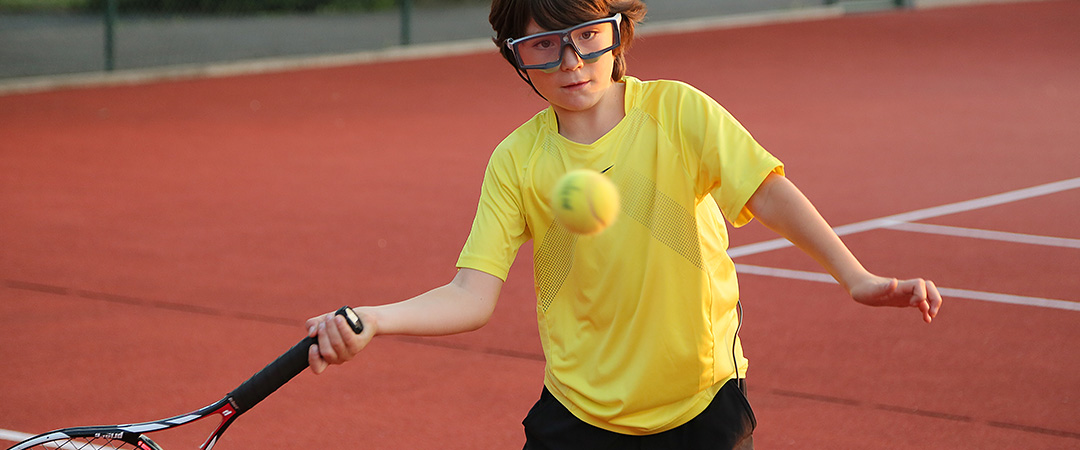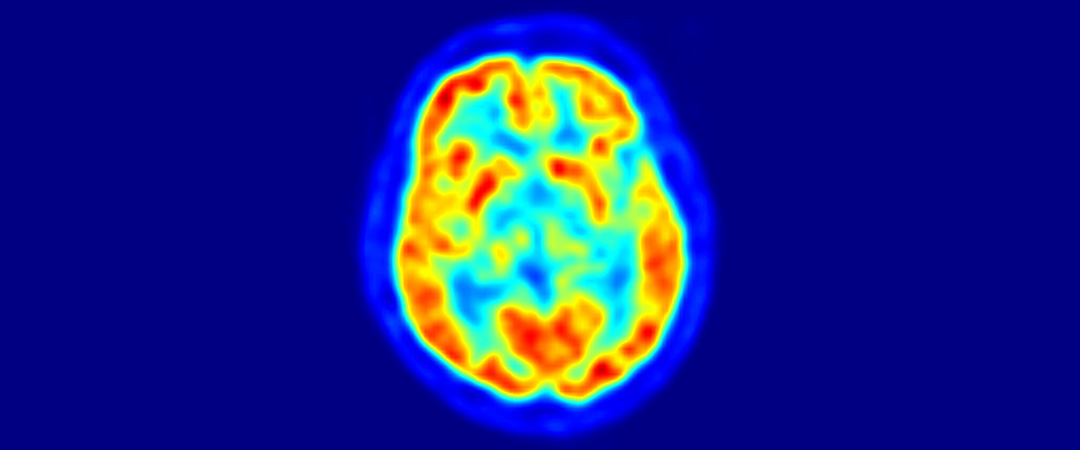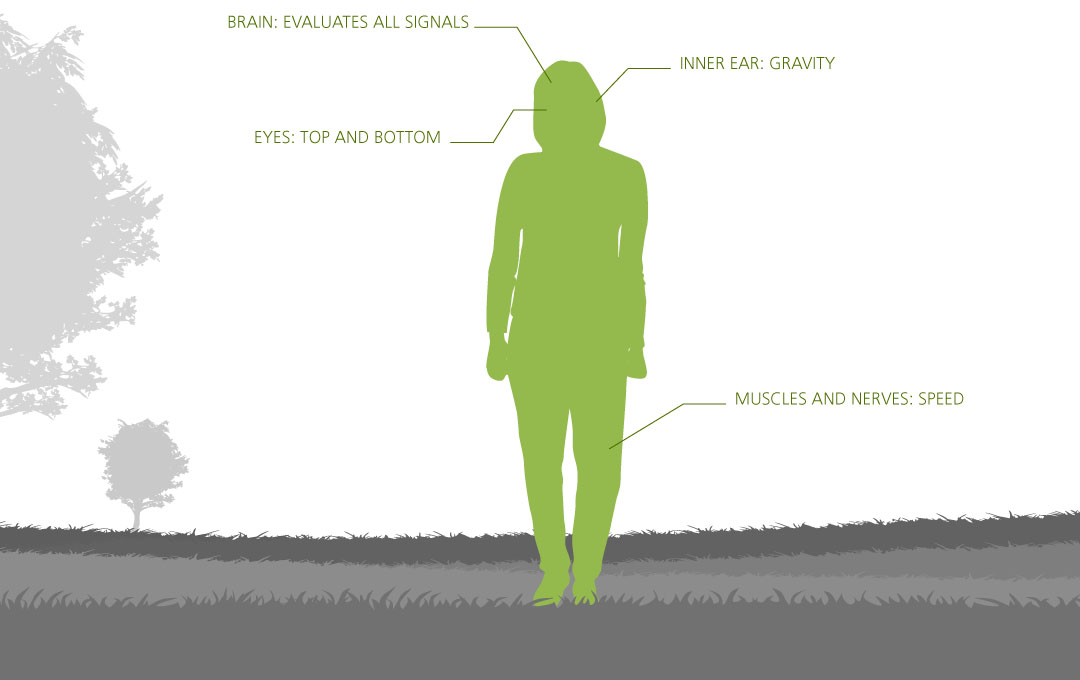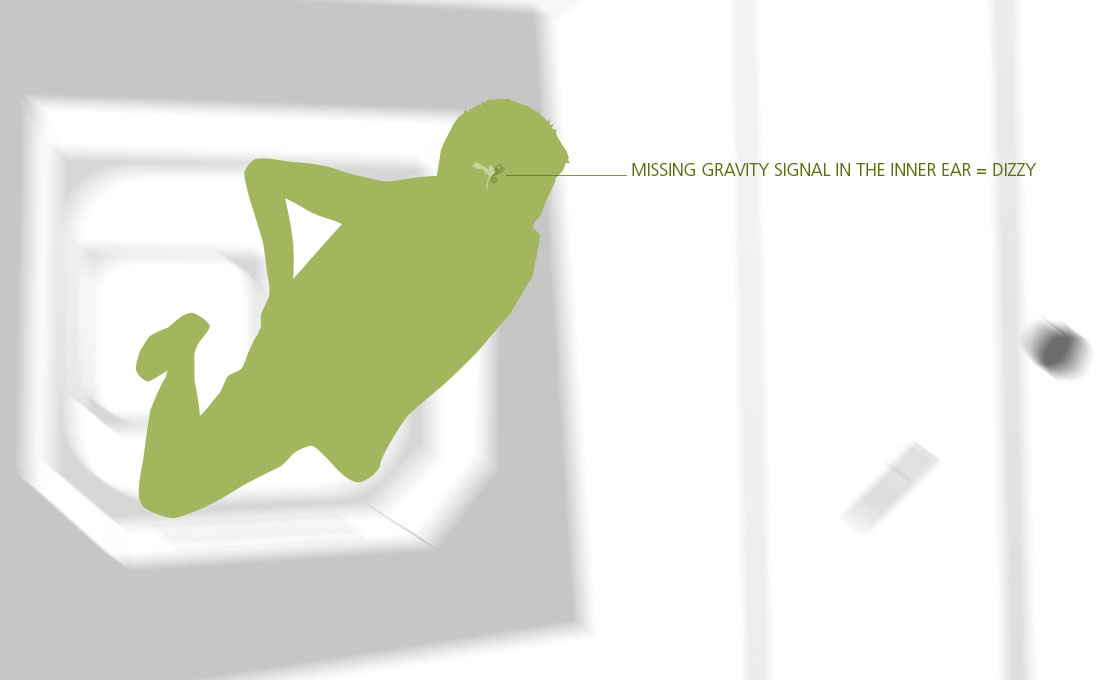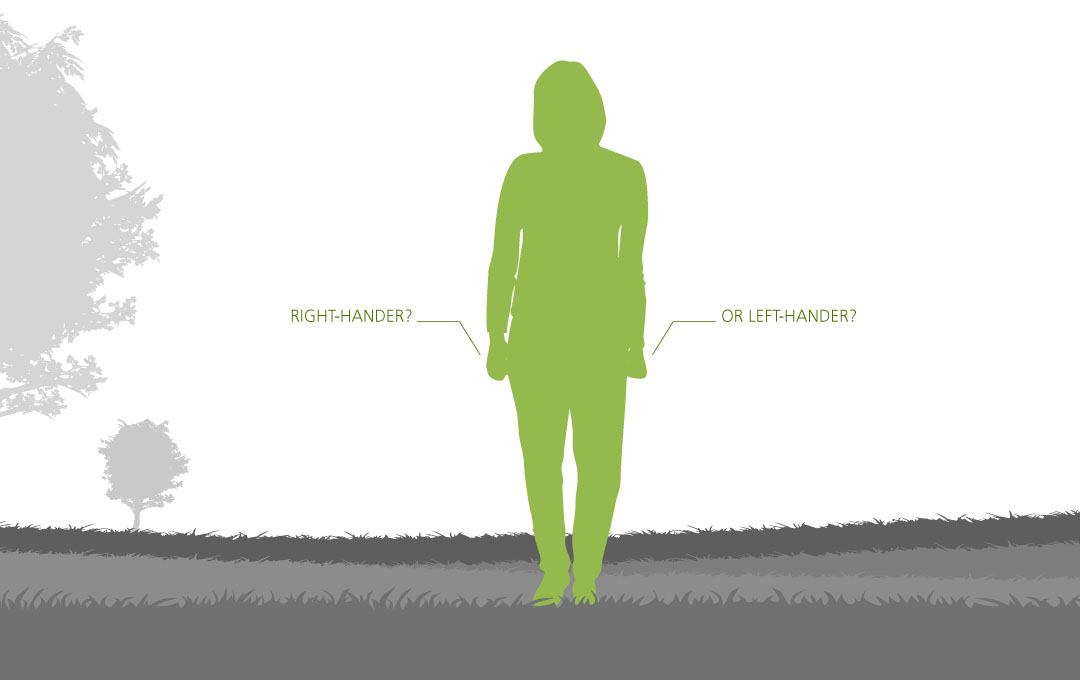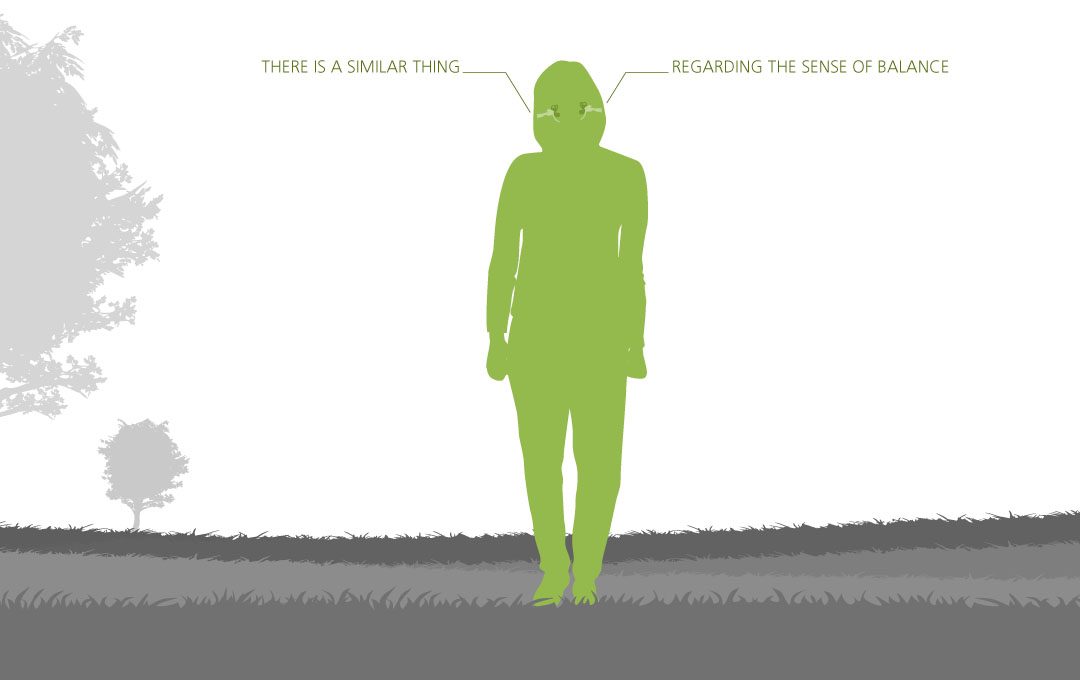From “seasick astronauts”
to better vision
Keeping eye laser surgery from backfiring
Today, an increasing number of people get their defective vision corrected through laser surgery on the eye (Lasik).
Precision is of utmost importance for controlling a laser – and that is not easy because the eye shows constant and unpredictable movement. This is why the pupil movements have to be precisely tracked to enable accurate control of the laser. To this end, technology from space flight is helpful, researched on and produced in Germany: OneK+ by Chronos Vision. A camera films the eye, recognises the pupil and tracks the movements – up to 1,000 times per second.
Initially, this technology was supposed to help getting a better understanding of the “travel sickness” that astronauts experience in space, which, in this case, is also called “space sickness”. Astronauts suffer from it quite often. They feel dizzy; due to microgravity their sense of balance is impaired.
Tracking the eye movements can determine how well the sense of balance works and how it adapts to microgravity. To track the eye movements, the 3D Eye Tracking Device has been developed in cooperation with Charité Berlin for deployment on board the International Space Station. Today, the eye-tracking technology is not exclusively used in ophthalmology.


Space sickness: when the sense of balance and the eyes lose the beat
The human body and thus also the sense of balance are used to gravity. Lack of gravity will cause the sense of balance to lose the beat. This is why about half of the astronauts experience dizziness during their first three days in space.
The medications commonly used on Earth do help, however, they make tired – which clearly is not a good thing given the full schedule of the astronauts. For this reason, research has been done for many years to identify the reasons for space sickness in order to come to grips with the problem without medication.
The eyes and the sense of balance are closely tied in terms of evolution: the brain evaluates the signals coming from the eyes, muscles, skin, and particularly from the vestibular organ in the inner ear. The assumption: when the eyes provide information contradictory to that from the inner ear, the sense of balance is impaired – we feel dizzy. But how strongly are which particular organs in the body involved in stabilising the sense of balance? And what does the eye contribute to this task? How changes the internal coordinate system that is being detected by the eyes and the sense of balance, if under microgravity conditions the gravity “sensors” of the otoliths in the inner ear do not send correct signals – while the eyes still divide the world in “top” and “bottom”?
The German 3D-ETD for the ISS
To research on the vestibular system, scientists have to track the eye movements. As early as in the nineties, the development of systems for measuring the eye movements commenced. For deployment on the ISS, a brand new generation of these devices was developed, the so-called 3D-ETD (three-dimensional eye tracking device).
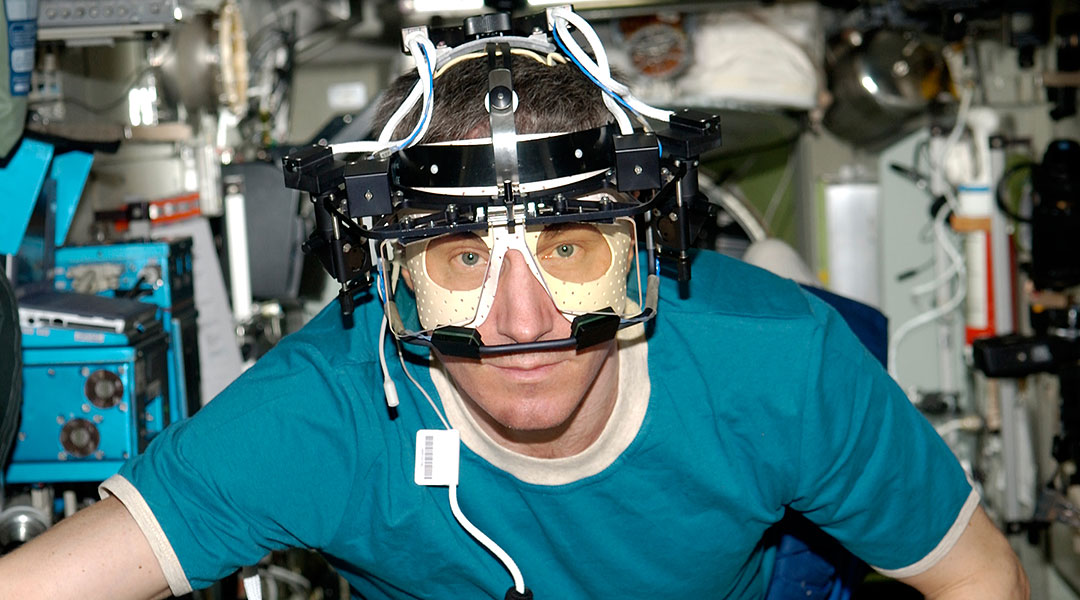
© Roskosmos
In two series of experiments conducted by Charité Berlin, this technology has been deployed on the ISS between 2004 and 2012, revealing completely new results as to the function of the vestibular system and the control of the eye movements.
The result:
The gravity detectors in the inner ear are extremely important.
The analysis of eye movements clearly revealed that the central nervous system relies on the gravity signals sent by the inner ear – not only for the sake of balance but also for spatial orientation and movement coordination. If there is lack of gravity, the body is not able to compensate that straight away.
Right-hander or left-hander?
There’s a similar thing regarding the sense of balance.
Humans have two inner ears, one of which plays the lead, similar to sinistrality or dexterity. Hence, everybody is either down at the right or at the left as far as balance is concerned. This is also a research result from space flight.
